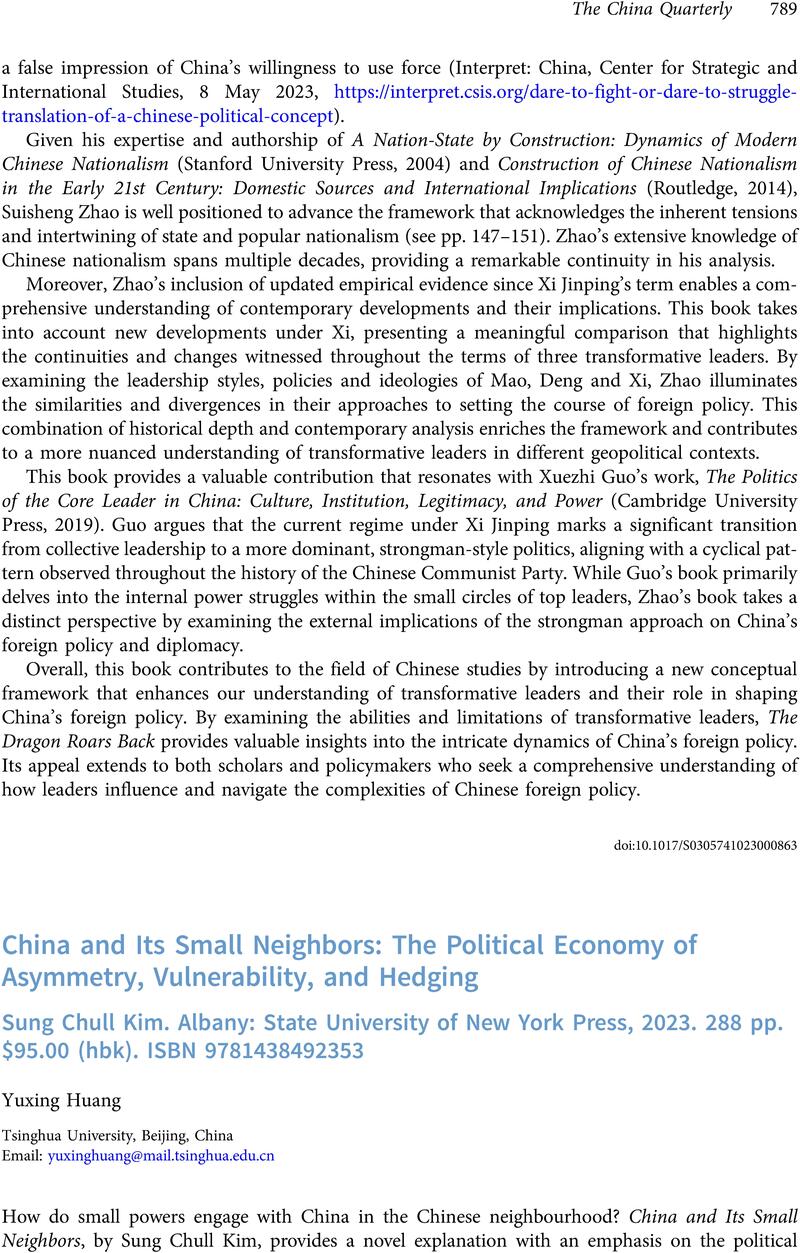No CrossRef data available.
Article contents
China and Its Small Neighbors: The Political Economy of Asymmetry, Vulnerability, and Hedging Sung Chull Kim. Albany: State University of New York Press, 2023. 288 pp. $95.00 (hbk). ISBN 9781438492353
Review products
China and Its Small Neighbors: The Political Economy of Asymmetry, Vulnerability, and Hedging Sung Chull Kim. Albany: State University of New York Press, 2023. 288 pp. $95.00 (hbk). ISBN 9781438492353
Published online by Cambridge University Press: 14 August 2023
Abstract
An abstract is not available for this content so a preview has been provided. Please use the Get access link above for information on how to access this content.

- Type
- Book Review
- Information
- Copyright
- Copyright © The Author(s), 2023. Published by Cambridge University Press on behalf of SOAS University of London



